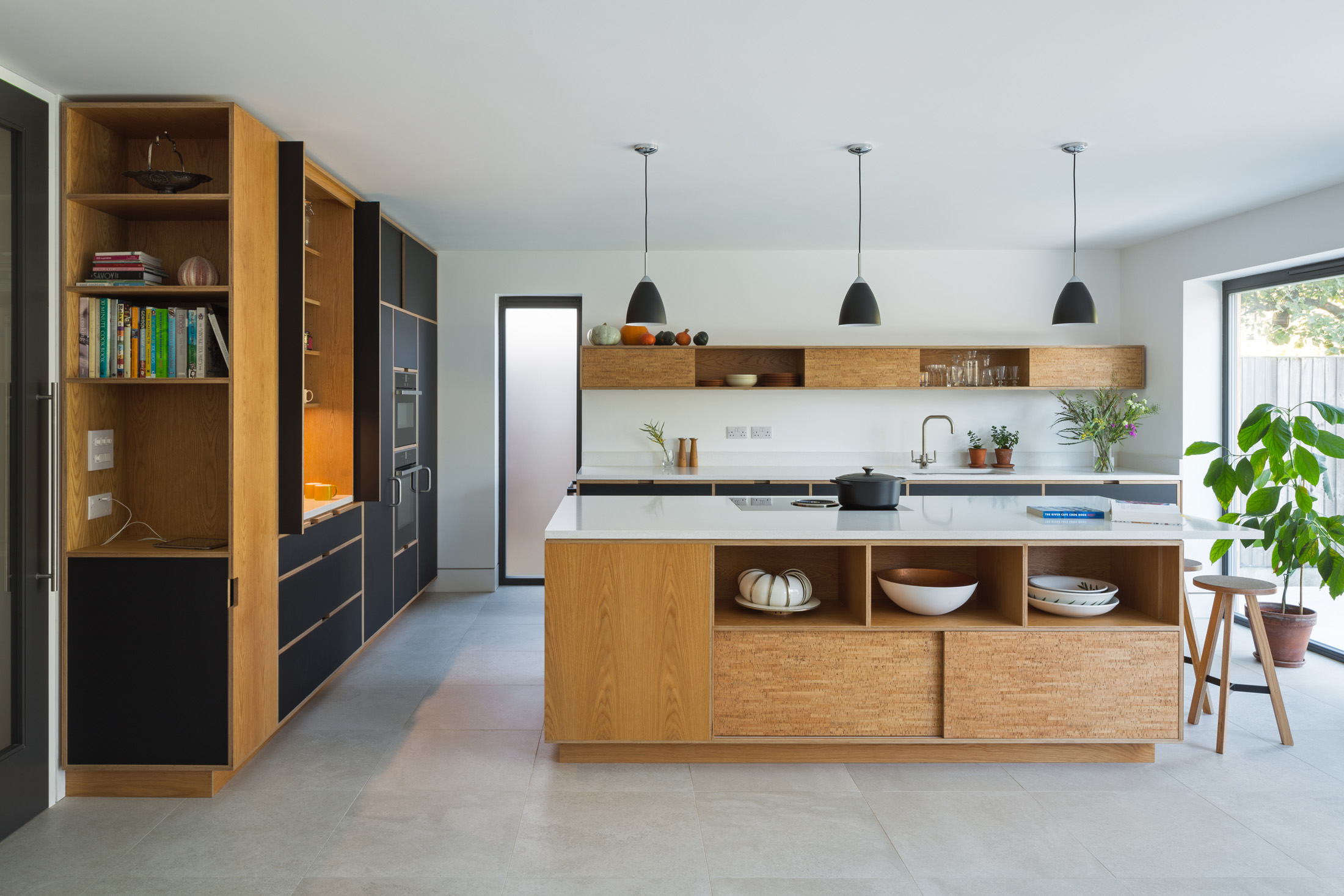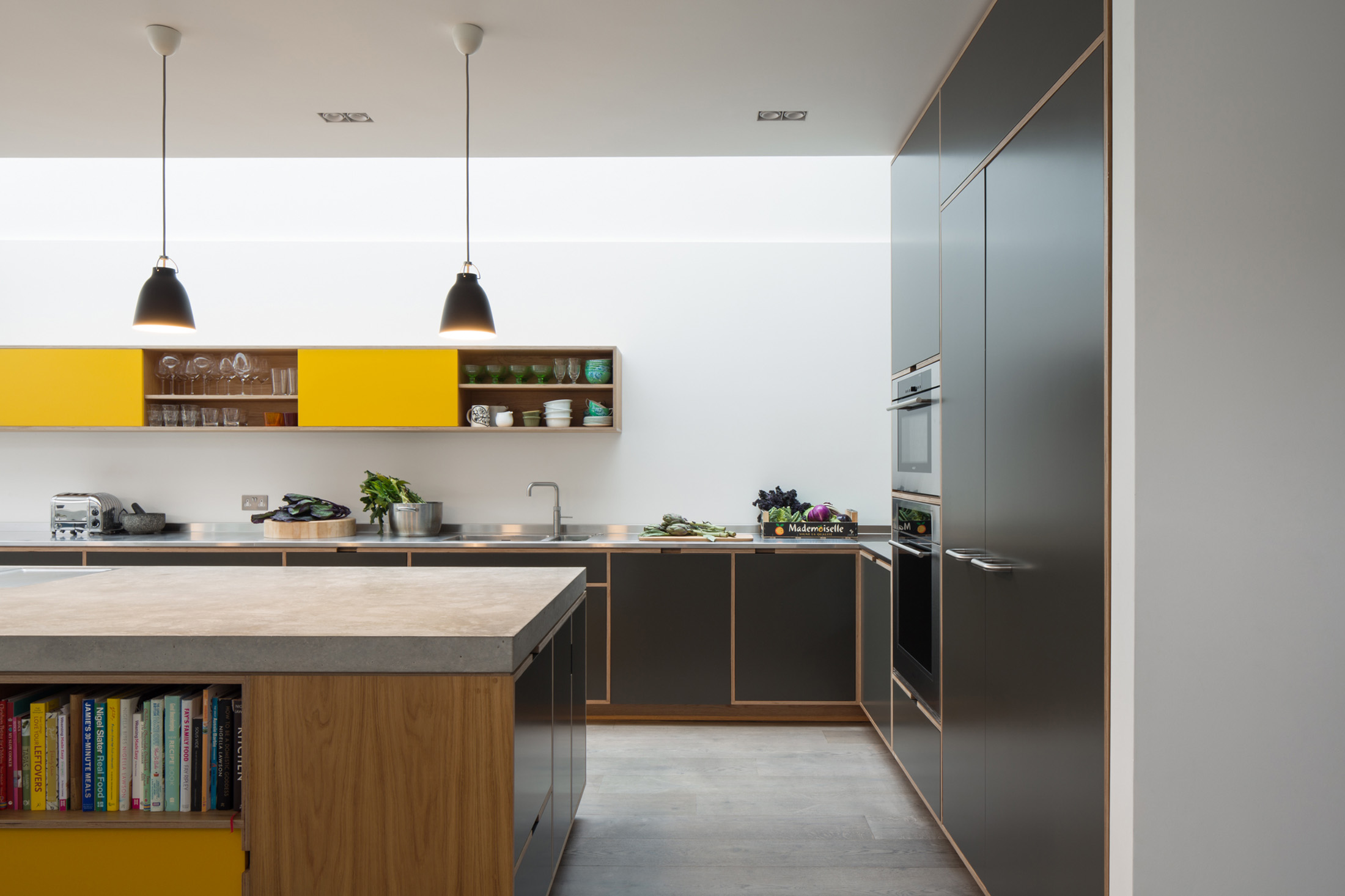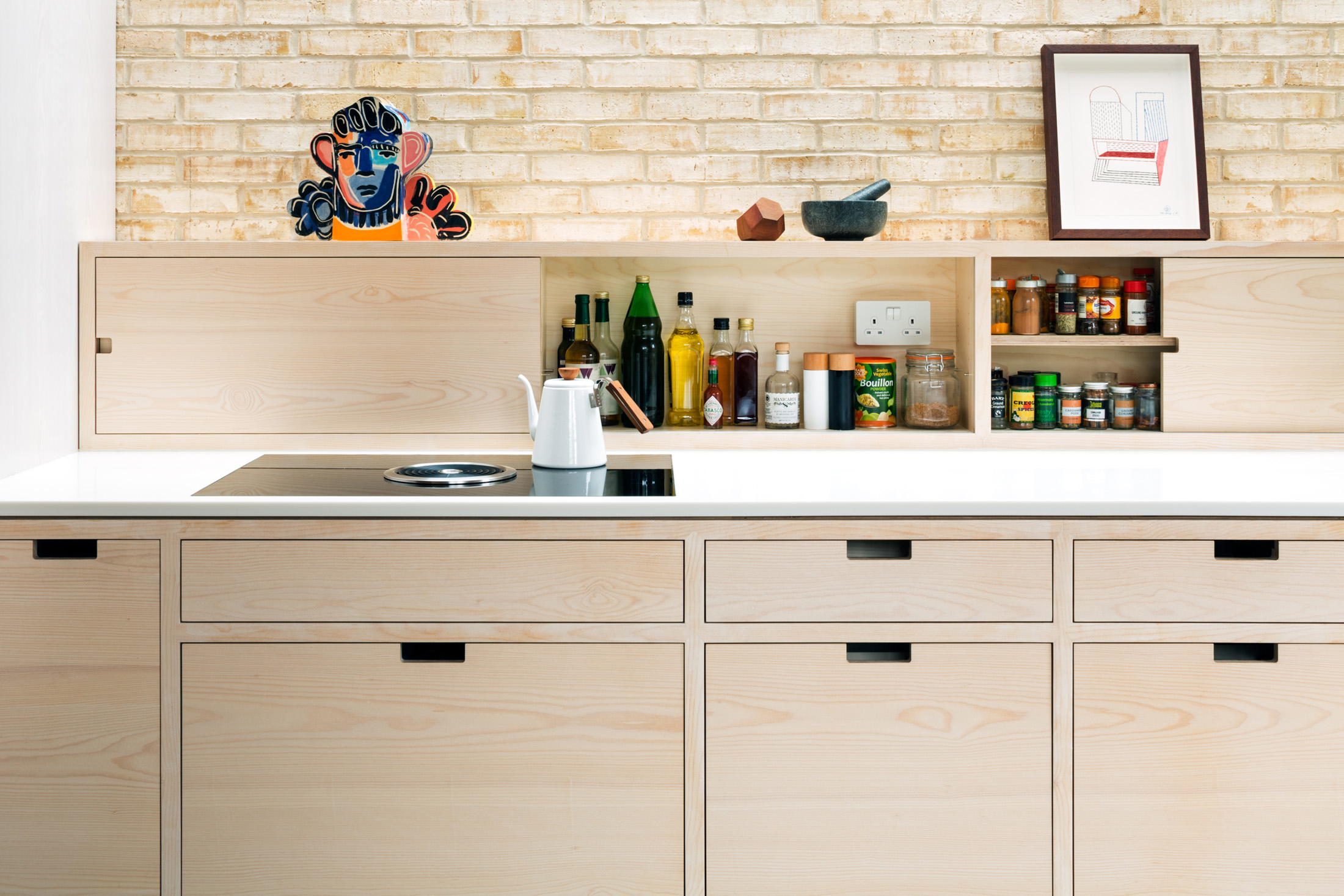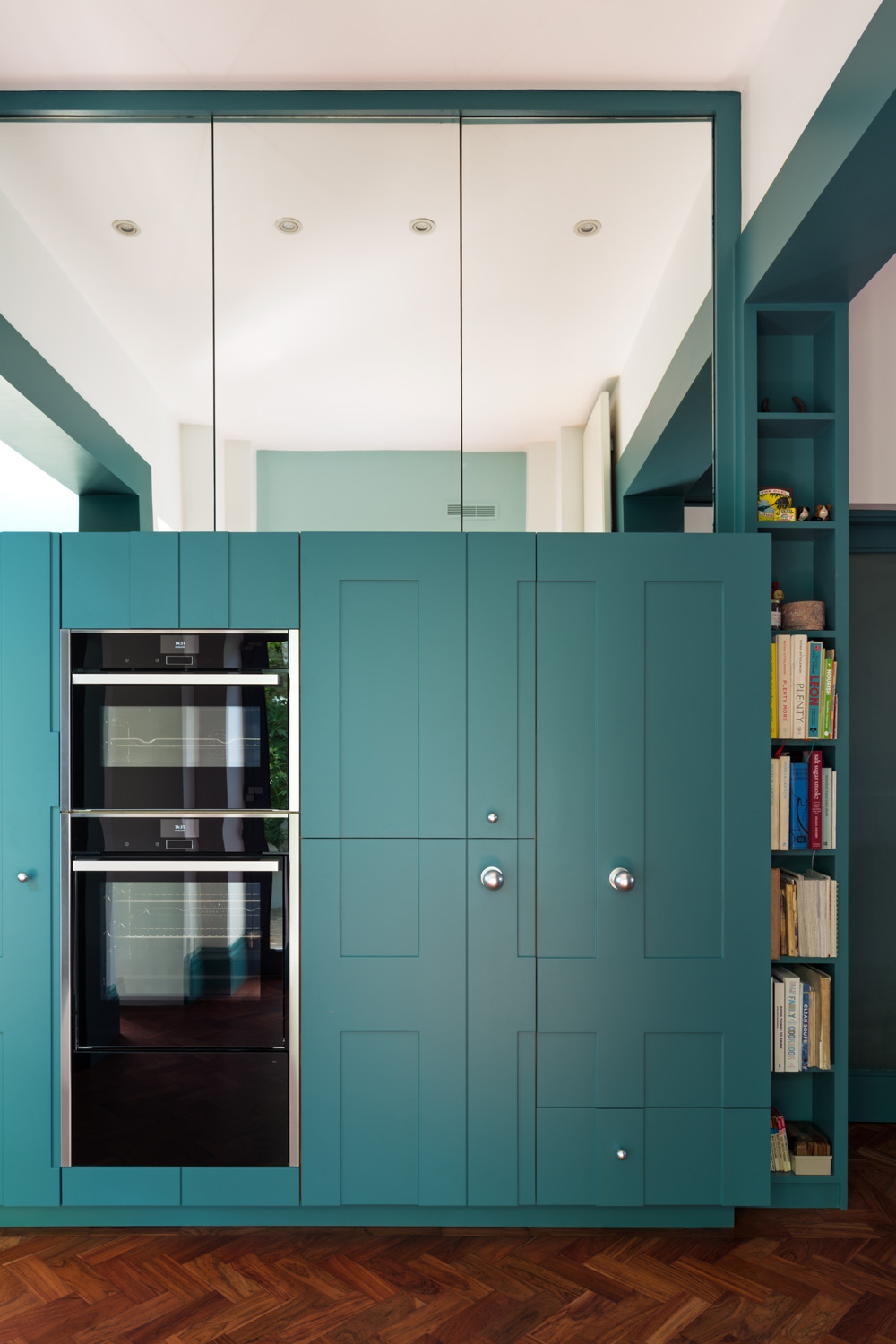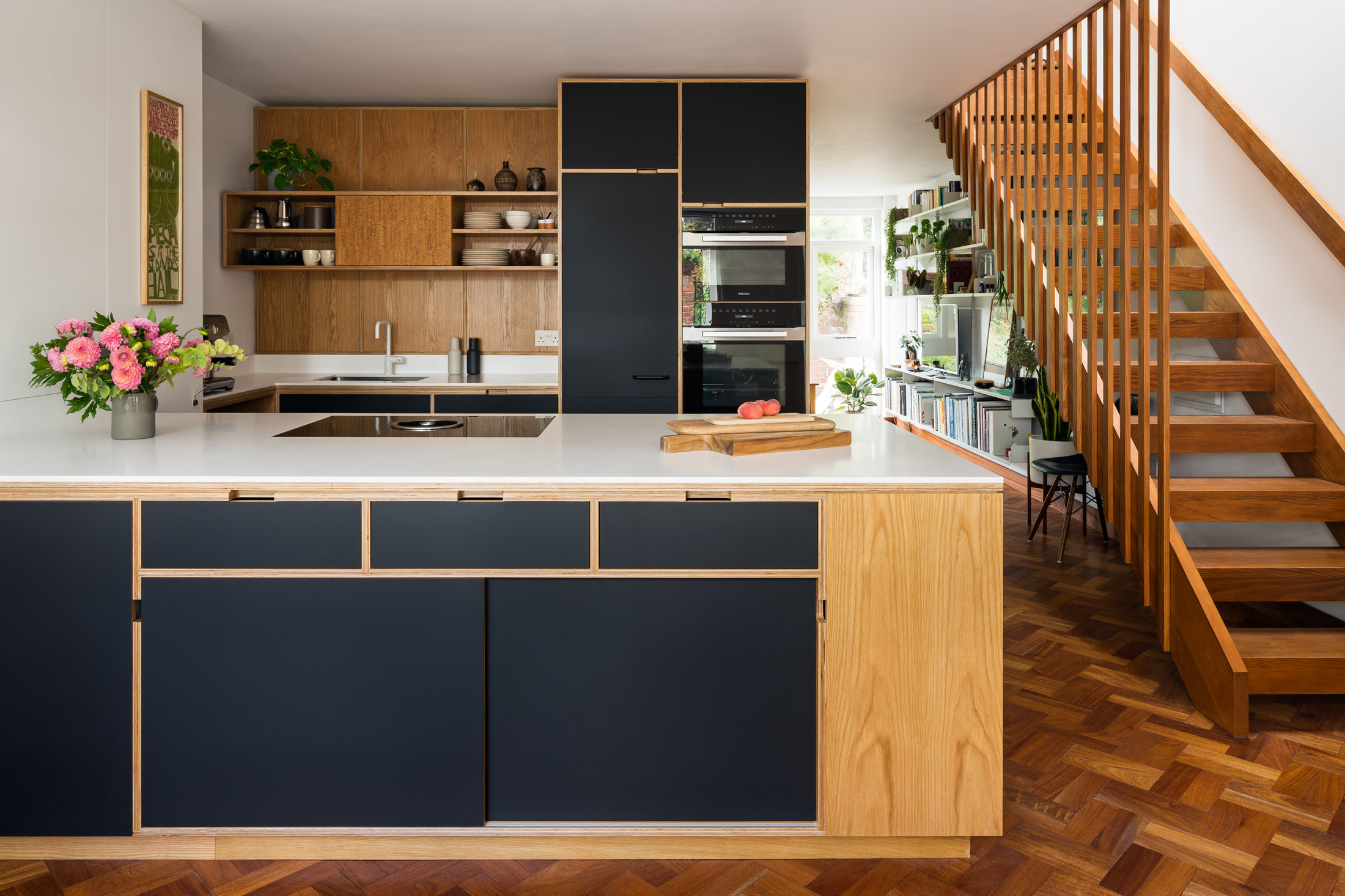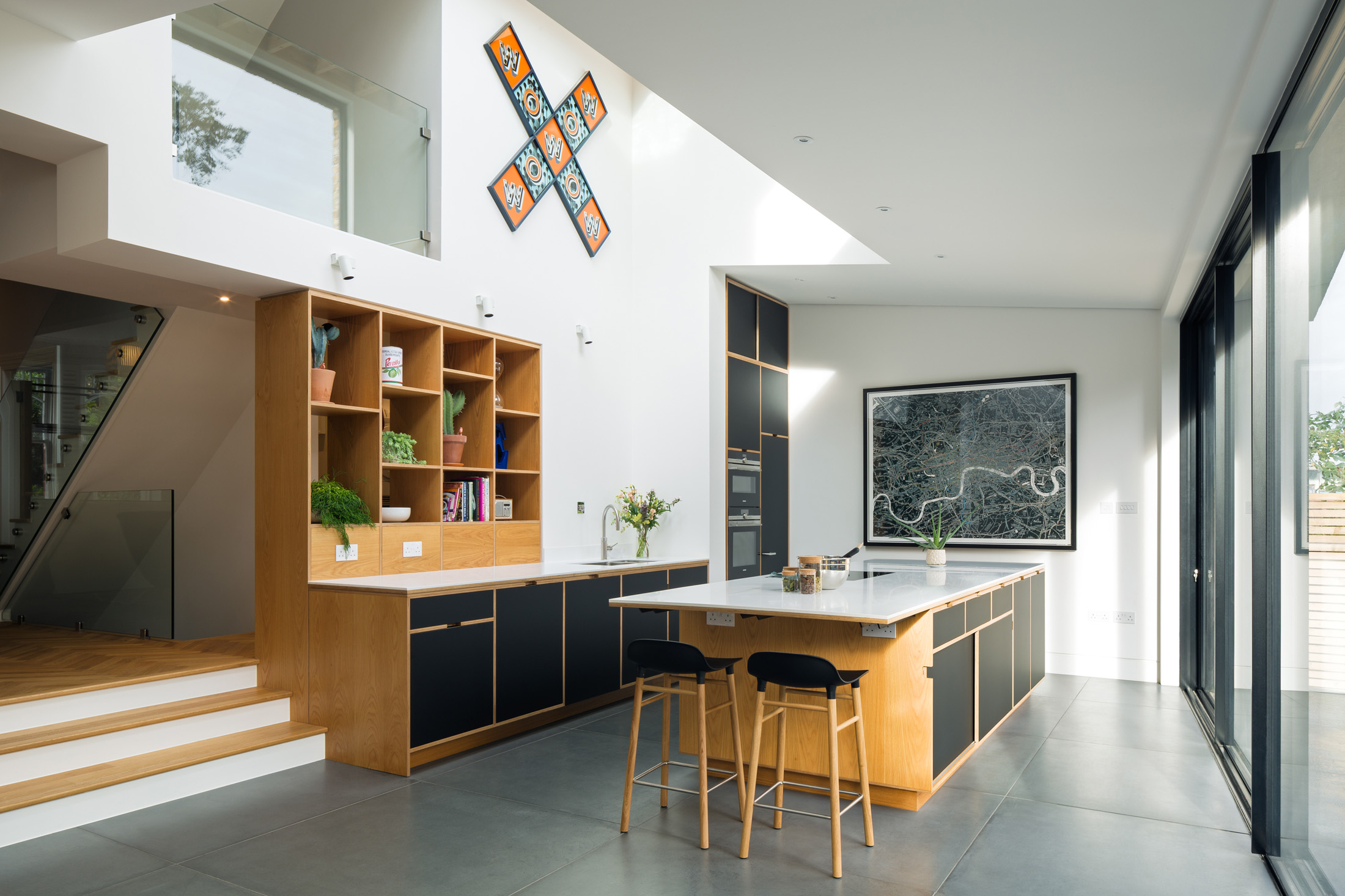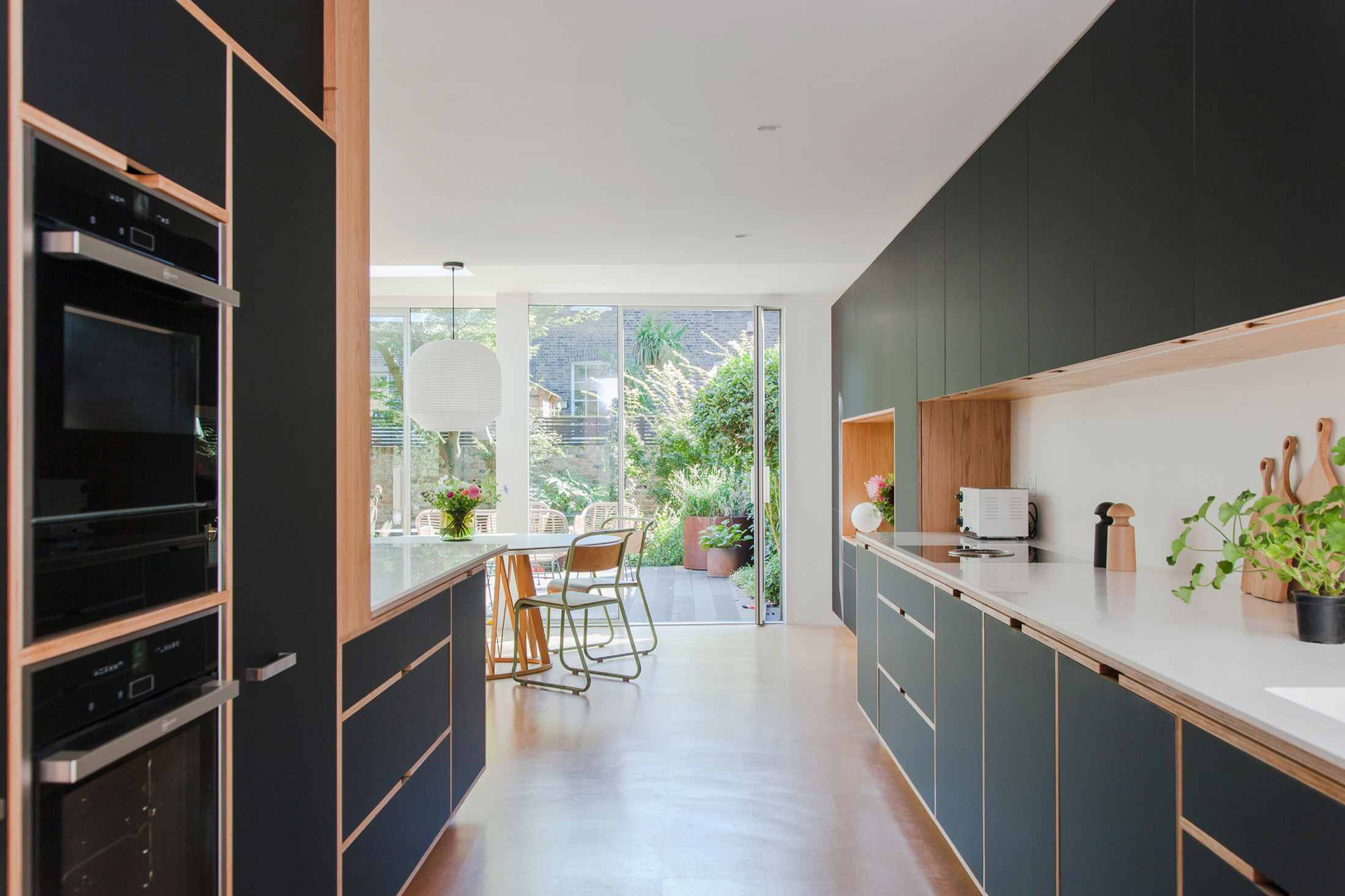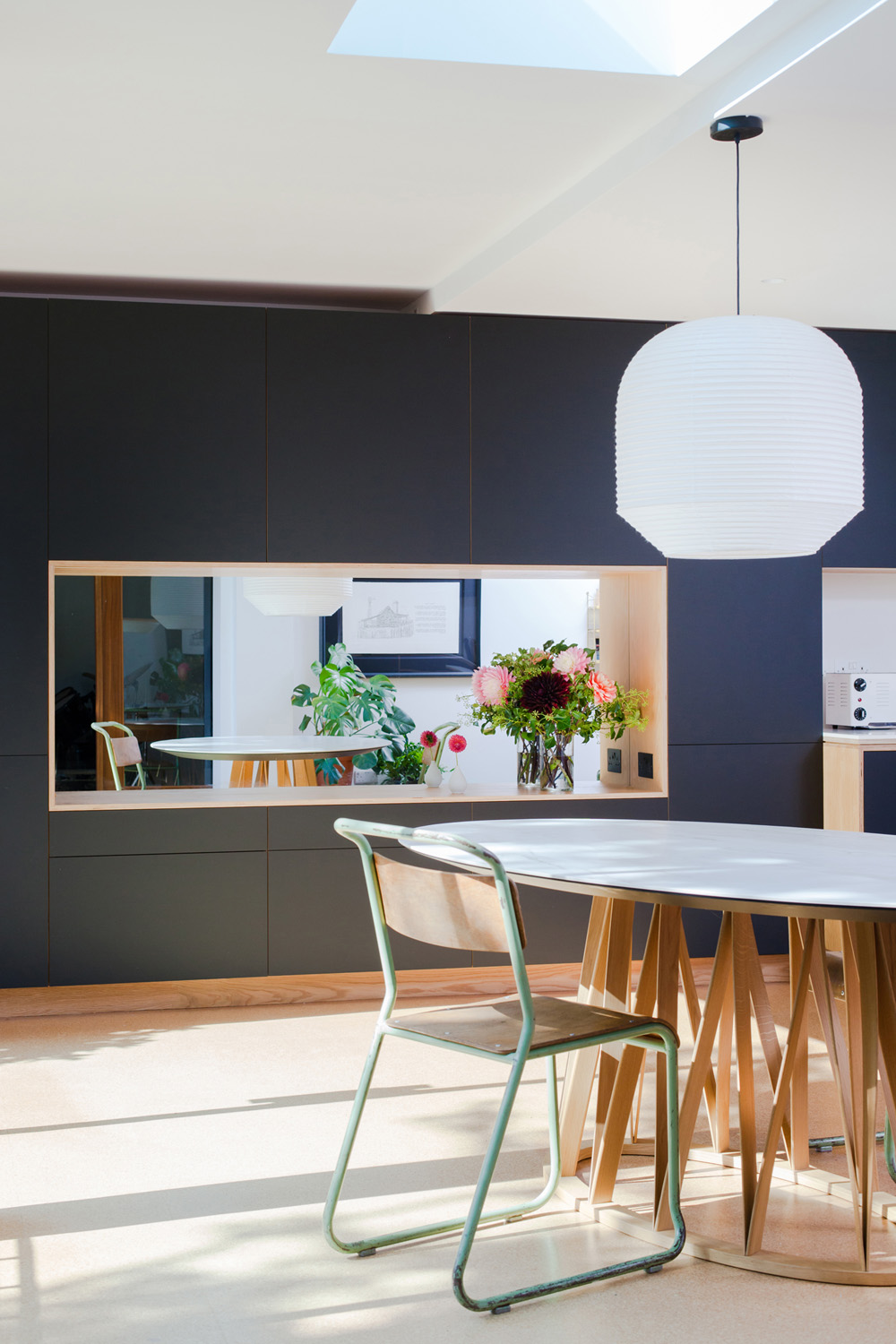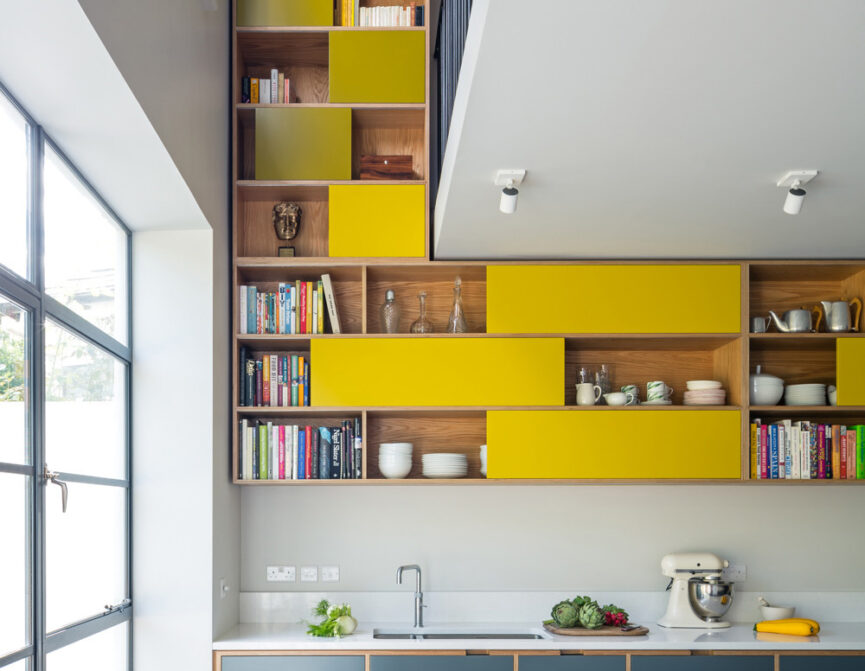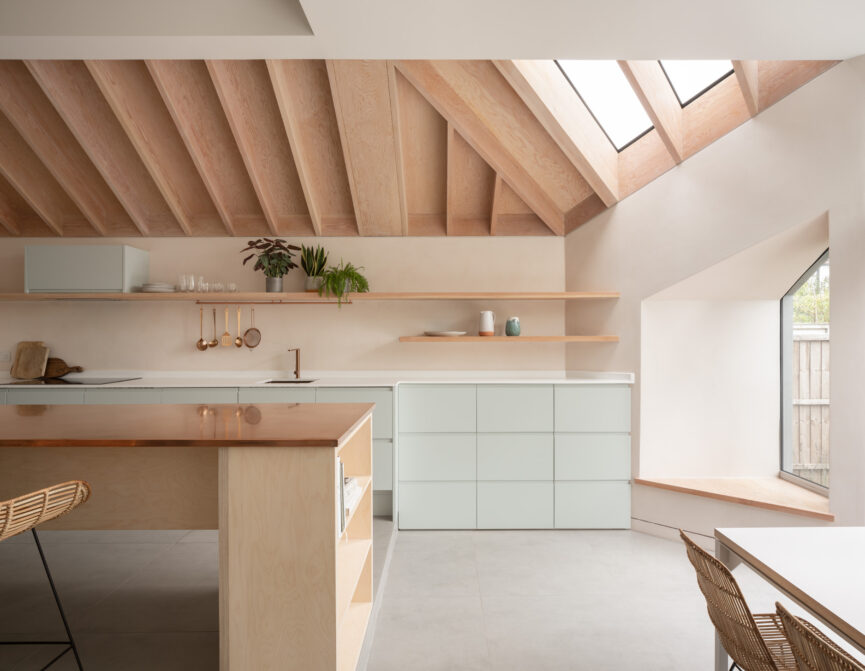Co-founders Alan Drumm and James Hoy on how they craft their idiosyncratic spaces. Plus, why plywood is the future of furniture design.
Imagine a kitchen that’s tailored to you, not just architecturally but in every fixture and fitting, too, right down to the shape of the cabinet handles. Custom-made, responsive solutions built to last a lifetime. That’s the raison d’etre of bespoke, London-based kitchen and furniture studio Uncommon Projects. You’ll know when you’re in an Uncommon space; modern, function-first design outfitted in honest materials and unique character.
Set up in 2011, the practice was a result of co-founders Alan Drumm and James Hoy’s, own struggle to source good-quality cabinetry that matched their budget. “We both bought new homes around the same time and struggled to find cabinetry that we loved and could afford”, Alan recalls. “James made some plywood storage using hand tools and then I made a plywood kitchen using a CNC cutting service. The rest is history.”
But the design duo’s story started much earlier. Having met through mutual friends, James and Alan were quick to realize that their styles struck the same note. Alan trained as an architect and James, a product designer, so it’s perhaps unsurprising that their attention to detail and their kinship came so naturally. “While my products would rarely be more than 50mm deep, Alan’s could be the size of a hospital. Now we both meet somewhere in between,” James laughs.
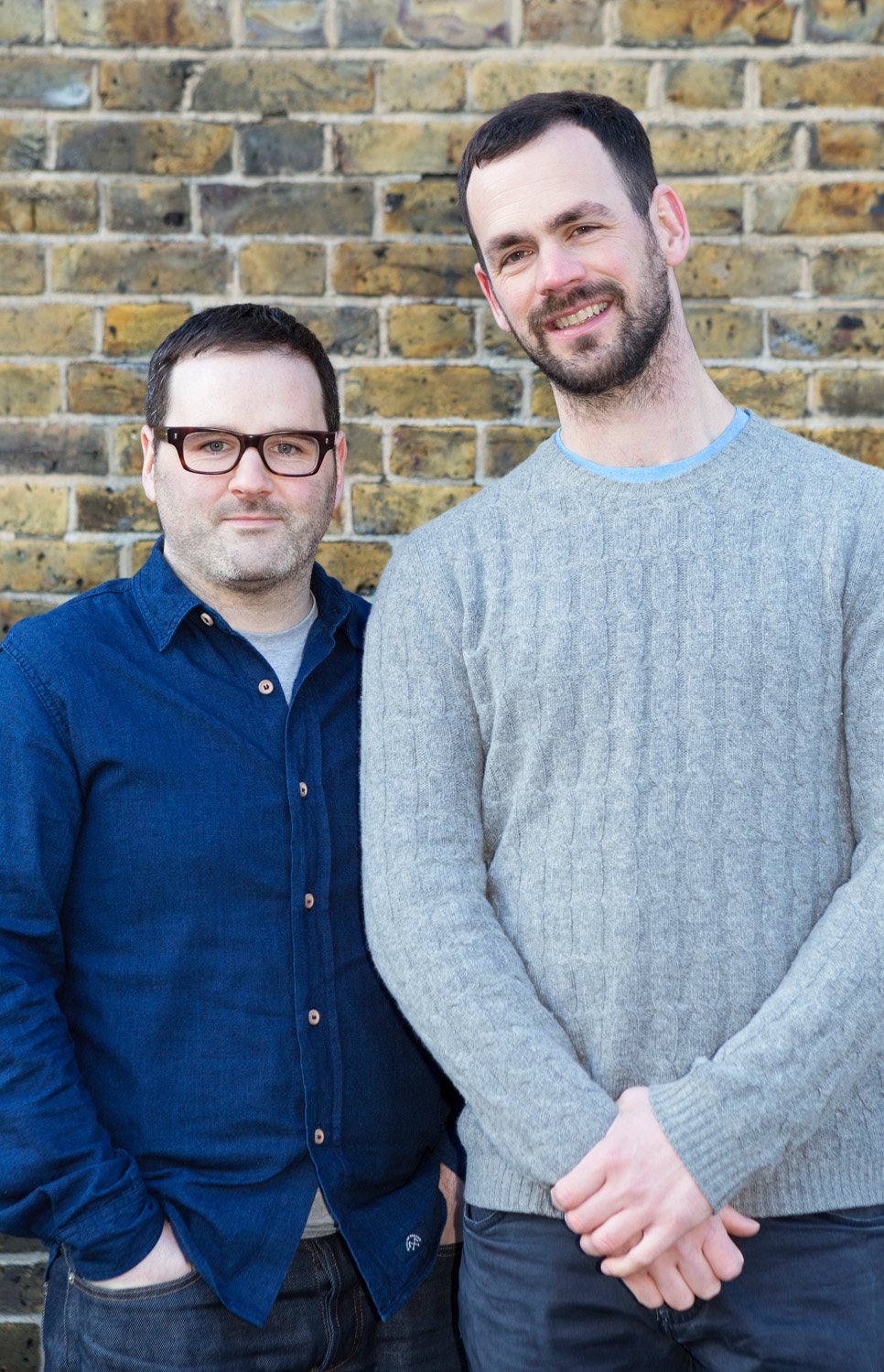
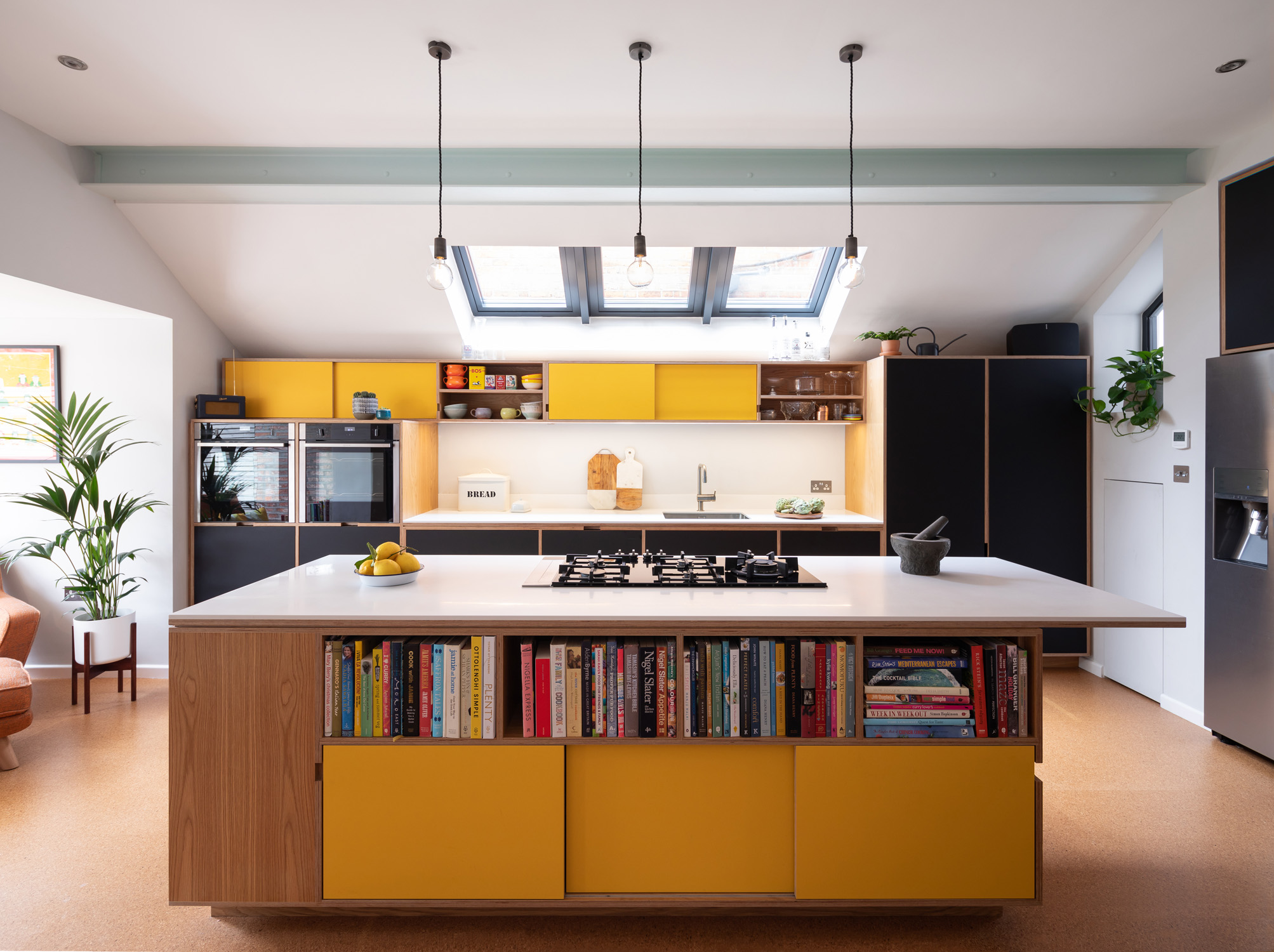
The pair are best known for their tailor-made, plywood-based kitchen solutions – a niche and previously overlooked material that has been a cornerstone of design since the 1850s. Its role was even recognised in the V&A’s 2017 exhibition, Plywood: Material of the Modern World. “Perceptions have changed hugely. I think 10 years ago plywood was seen as a cheap option, but in reality, it’s arguably better than solid wood when making kitchen carcasses and doors in most cases,” Alan points out. He continues: “We were quite niche when we first started. Most of our clients were other creatives, people working in the fashion industry and architects. Now, some of our clients appreciate the care and attention to detail of our work. Others just like the inviting feel of our spaces.”
The use of plywood isn’t a new trend – it has a rich design history. Ray and Charles Eames, Alvar Aalto and Marcel Breuer are only a few of the names that included it in their iconic portfolios. So, what are its benefits? Versatility, character and quality Alan sums up. “Plywood is very strong and has its own inherent beauty, particularly in the lines of the exposed cut edges. It allows more flexibility in design and means we can include details such as the handle cut-out,” Alan says. “Clients often come to us saying they are nervous about making such a bold design choice, but when they see it in person in the showroom, they realize its quality and warmth. We always say we make the opposite of the ‘shiny white kitchen.’”
Plywood is very strong and has its own inherent beauty, particularly in the lines of the exposed cut edges.
- Alan Drumm

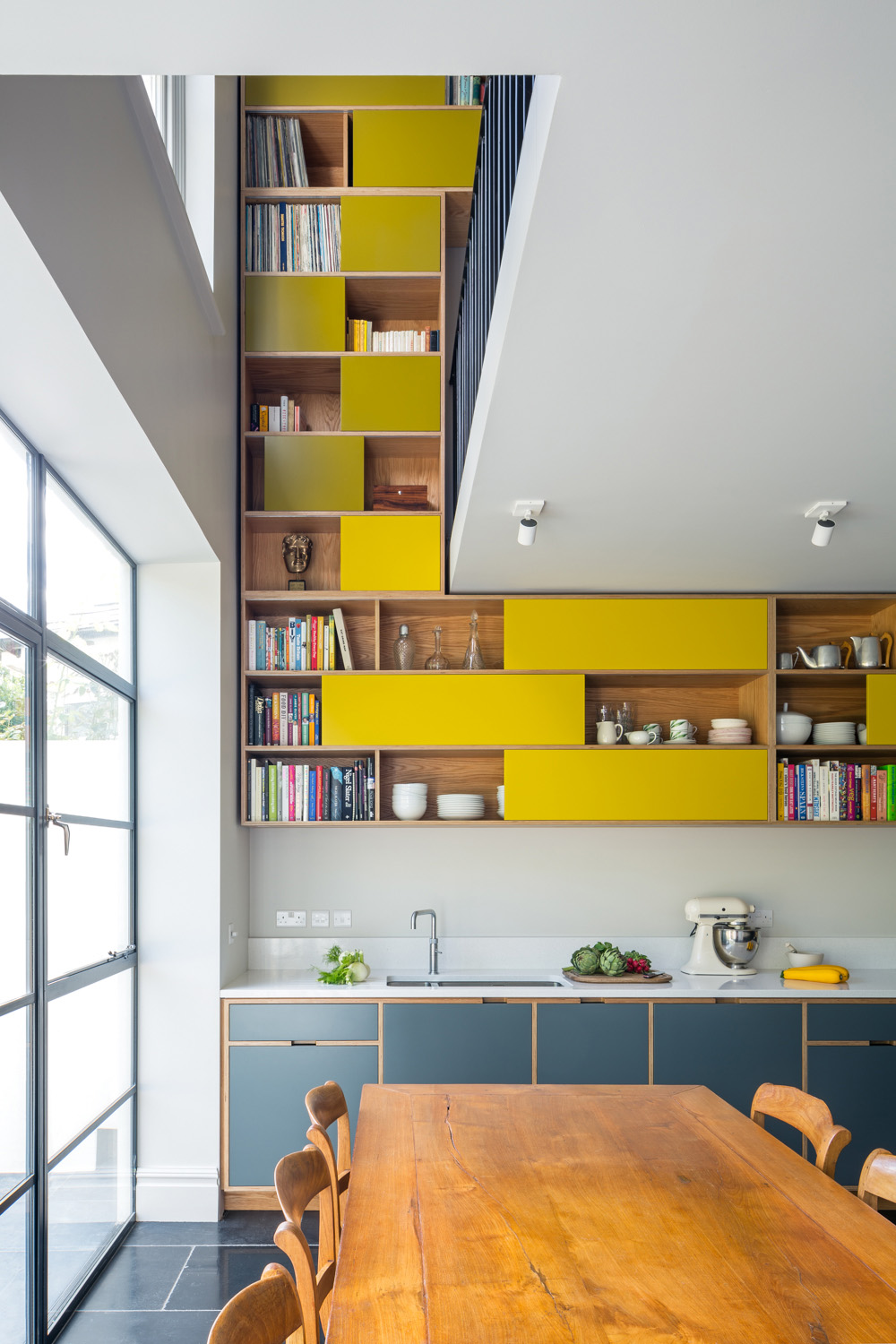

Uncommon Projects don’t just break the mould materially. For Alan and James, kitchen design should be more intuitive that the kitchen work triangle of fridge, sink and hob. Revealing the foundations of their approach, they consider how to maximise the flow of space, incorporate clever storage and improve the relationship between household chores and functionality before putting pen to paper. More often than not, this involves taking a limited blueprint and balancing square footage with both practicality and craftsmanship. More recently, the duo has witnessed an inclination toward playful colour choices too, partly thanks to social media. “We are already seeing a lot more pink and coral accent colours which can look great with navy blue doors. We like to use very bright or very dark doors with our plywood cabinets, which offer the best contrast with exposed plywood edges”.
With an impressive portfolio, the studio credits its clientele for presenting them with new challenges that require out-of-the-box thinking. Alan recalls two in particular: a charcoal veneered kitchen with tangerine worktops for Stefi Orazi, the author of Modernist Estates and a minimalist-inspired space for the award-winning Pocket House by architecture practice Tikari Works. “I like projects where clients have a really strong vision for what they want to do, and they push us out of our comfort zone. Working with people like this pushes us in new directions,” Alan says.
Not one to take a break, Uncommon Projects also launched a furniture line, Uncommon Objects to bring a few of their unique pieces to people’s homes. “The Uncommon Objects range was inspired by the products our customers actually wanted and needed to complete their project; sideboard storage for the living room, a fun stool for the breakfast bar, or just a simple knife block to store the kitchen knives properly,” Alan explains. When one of their stools was gifted to John Booth, it resulted in a collaboration between the architecture practice and the London-based artist, after a little encouragement from a mutual friend: “The collaboration was very fun, we talked and sketched out ideas for the scalloped bed which John then painted by hand. The table and stools are standard pieces we had been working on anyway, which we digitally printed with artwork created by John for each piece,” Alan recounts.
After a busy year drawing up purpose-driven, human-centric designs and championing the value and potential of plywood, Alan and James are far from finished. “We are currently working towards opening our new studio and showroom in the Design District on Greenwich Peninsula in early 2022,” Alan says. “This will allow us to showcase what we do now but also launch a couple of new looks. We don’t want the space to feel like a typical high street kitchen showroom, and are planning on keeping it more fluid, and hopefully have other creative events in the space.”


